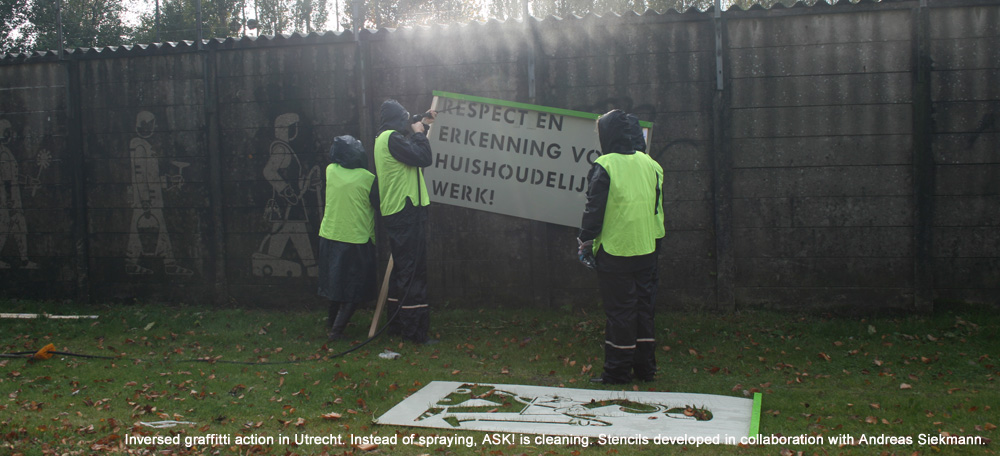“I think the artistic is like a double-edged sword.“
An Interview with Janna Graham, Nicolas Vass, and Annette Krauss by Laila Huber
But don’t you make a distinction or draw a boundary between cultural and artistic work and political work?
Janna Graham: Not really. For me it is first about commitments and desires and then about the multiple disciplines that intersect with them. You live a life, you have multiple commitments, some of them are more aesthetic and some of them are more political. Those paradigms that produce something as “artistic” or “political” are often imposed; they are social frameworks that produce a difference in what could otherwise just be called a life or a practice. From the perspective of commitments, for me there are not very many differences between cultural work and political work. But there are different spaces, habits, and accountabilities associated with the professionalized arts and with the paradigm of political work. It is very important to see where these paradigms or fields generate conflicts between the two. Why is one project called art and another designated as political? Who names them? What are their investments in describing something as “artistic” or “political”? What are the assigned projects and attributes expected of each paradigm? Why shouldn’t they overlap?
Annette Krauss: I guess for me it relates back to what I said about the redistribution of what we understand as aesthetic: The moment that I would name it artistic, I need to work through my complicities in naming it so. For example, with artistic intervention what also comes to mind is how aware I am about my complicities with, for example, the creative industries. Maybe in this way, I am able to make better distinctions, how to act. It is also very much about trying to find out how I can continue to move in affinity with political groups and ideas and maybe at certain moments I realize quite late that I am moving in the wrong direction, but this doesn’t mean that I can’t turn.
Janna Graham: It is also interesting how you describe yourself to the people that you work with, who aren’t from the arts. Because I’ve had this conversation many times, with young people involved with the Centre for Possible Studies when going to do a street intervention, they ask, “Is it better to say, we are a group of artists or is it better to say, we are a group of students or is it better to say, we are a group of activists?” The terms we use are about the reaction we want to produce. When you are speaking to the police about your action, for example, you use “artist” because that gives you more license, whereas when you are speaking to a group of people on the street who disagree with you, you might not say “artistic” because they might think that is not important politically. They might think, “Oh, look at them doing their crazy art thing.” Art has this capacity to create a buffer and people understand it as a buffer, as not being real. So the term can work both ways, as protective, but also as completely neutralizing. It is always important to consider which strategy is actually the most useful at that particular moment.
Janna Graham, Nicolas Vass, Annette Krauss, Laila Huber ( 2014): “I think the artistic is like a double-edged sword.“. An Interview with Janna Graham, Nicolas Vass, and Annette Krauss by Laila Huber . In: p/art/icipate – Kultur aktiv gestalten # 05 , https://www.p-art-icipate.net/i-think-the-artistic-is-like-a-double-edged-sword/


 Artikel drucken
Artikel drucken Literaturverzeichnis
Literaturverzeichnis